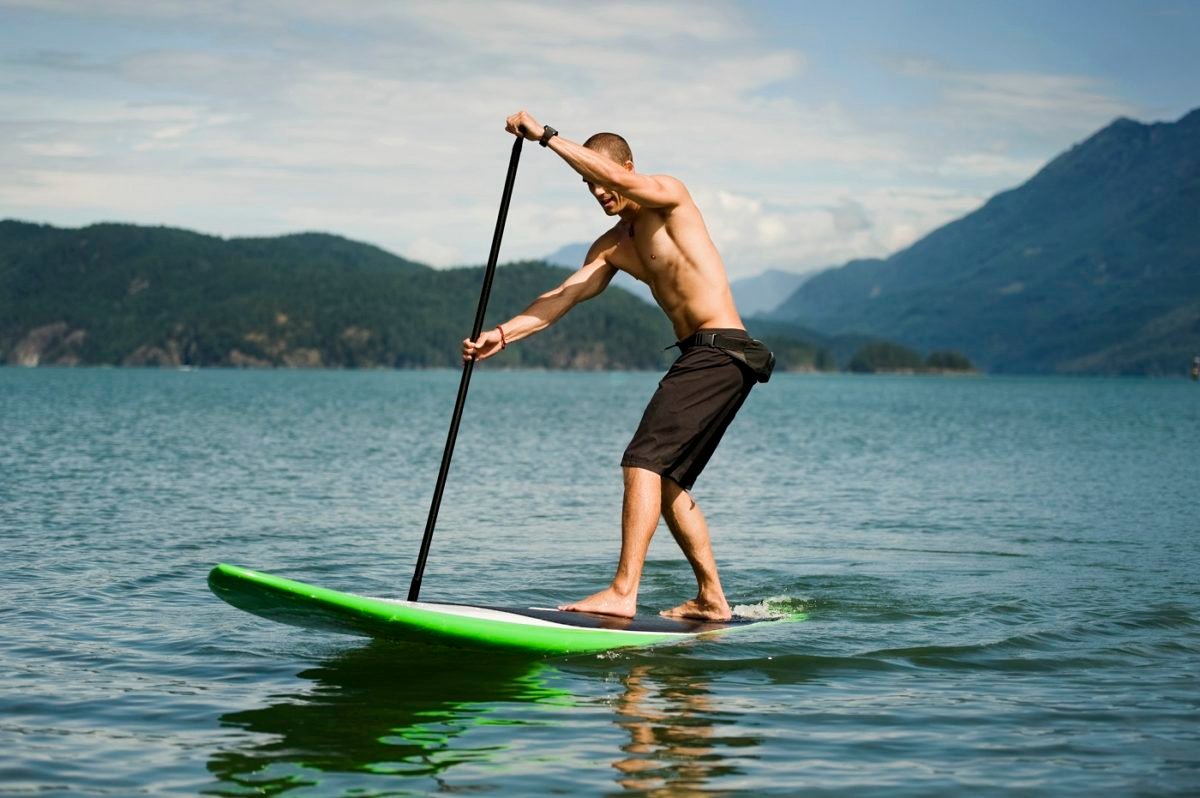techniques that you can learn to be a better paddler. Practicing will make you do away easily with the standard errors committed by many. It would help if you also had the right watersport apparel, and the best place to have them is Cotswold Outdoor.
In this post, you will read about the advanced paddleboarding techniques; enjoy the rest of the reading.
Stance Perfection
Stance is a vital aspect; how you position yourself on the paddleboard matters a lot. The way you stand on the SUP impacts the general balance during paddling. To perfect how to stand on the paddleboard, you will have to learn how to position your foot correctly.
On the SUP, picture an imaginary line that runs from the nose to the tail. Your entire body weight needs to be balanced by ensuring the feet are parallel on either side. Always ensure your foot is not far from the nose or back to have maximum stability.
You will experience a smooth glide across the water by positioning yourself at the centre. You can stand at the nose as your partner stands up at the back of the board. Additionally, if you are two onboard, you and your passenger should stay apart.
Always keep your knees bent, as it will cushion any waves or water movements out there as you paddle. Nothing will prevent you from having superb balance and stability if you keep your knees slightly bent.
Paddle Using your Core
The cores tend to be the strongest muscles; they can provide the required strength to paddle stroke. Paddling with cores might sound strange and awkward, as many are used to using their arms, which is not the best way to go about it. Imagine standing up straight for minutes or hours just paddling with your hands. It must be very tiring, and eventually, you will lack the power to sustain yourself through this watersport.
Face the Horizon
As a newbie, you will focus on looking down the board, fearing not to fall as you watch the water lapping on the sides of the board. Looking down at the board is a habit you need to do away with. It would help if you learned the advanced technique; looking down the paddleboard will inhibit your balance. The best thing to do is to have an upright posture with your weight over your toes and look at the horizon.
Maximize your Space
Put on your beach wear, look for an area on the shore that is not populated, and enjoy this beautiful beach sport. As you paddle, please don’t limit yourself to the places you surf on, be it the lakes, rivers, or the ocean; all of them are big. Always be cautious of other water users, paddleboards are big, and when they hit someone, they will get hurt.
Fall the Right Way
No one can run away from falling off the paddleboard, even if you are a veteran. Falling is a routine; what matters is how you fall. Everything is about practice; the same thing applies to falling; you need to learn so that you don’t fall and injure yourself. Paddleboards are huge; poor falling has some consequences that you will not like.
When falling, individuals want to fall away from their boards which is not possible as they are attached. Falling well clear of the board will allow you to fall without the fins or the boards injuring you. It is crucial to master the way you fall, as there are some places where you will encounter waves whereby the board will surf independently.
Beware of the Winds and Waves
Before you start paddleboarding, it is important to consider the weather to be aware of any changes that may occur in the process. If you get in unfavorable winds, just lay down and tuck your paddle beneath your body, then resume paddling like a standard SUP. The technique is referred to as paddling prone.
It is not all about competition or showing off; it is a sport we do to enjoy ourselves and exercise our bodies. Do not force yourself into scenarios where you know you can’t, especially if it is against nature. Understand the weather and ride in the waves that you can sail, be keen as Mother Nature is a strong being.
Final Comments
The above-explained advanced paddleboarding tips will enhance your techniques and competence as you paddle. Always use a leash and remember to keep safe as you paddle; immediately you feel unstable, immerse your paddleboard into the water to maximize your stability.
Maintain a low stance, especially if you are a newbie in this kind of watersport. Paddleboarding is not all about speed or any other show-off form; learn the technique slowly, and you will find yourself a better paddler.
